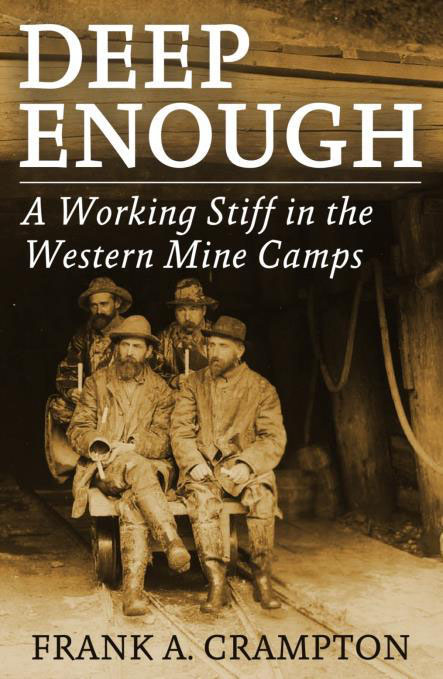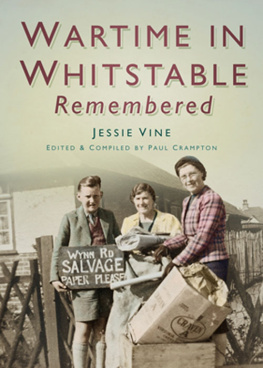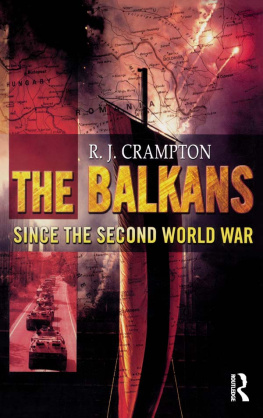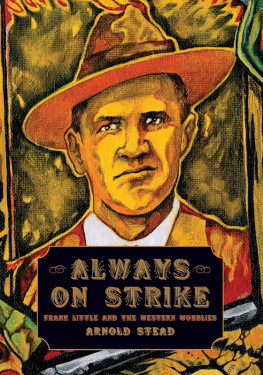Frank A. Crampton - Deep Enough: A Working Stiff in the Western Mine Camps
Here you can read online Frank A. Crampton - Deep Enough: A Working Stiff in the Western Mine Camps full text of the book (entire story) in english for free. Download pdf and epub, get meaning, cover and reviews about this ebook. genre: Non-fiction. Description of the work, (preface) as well as reviews are available. Best literature library LitArk.com created for fans of good reading and offers a wide selection of genres:
Romance novel
Science fiction
Adventure
Detective
Science
History
Home and family
Prose
Art
Politics
Computer
Non-fiction
Religion
Business
Children
Humor
Choose a favorite category and find really read worthwhile books. Enjoy immersion in the world of imagination, feel the emotions of the characters or learn something new for yourself, make an fascinating discovery.
- Book:Deep Enough: A Working Stiff in the Western Mine Camps
- Author:
- Genre:
- Rating:4 / 5
- Favourites:Add to favourites
- Your mark:
- 80
- 1
- 2
- 3
- 4
- 5
Deep Enough: A Working Stiff in the Western Mine Camps: summary, description and annotation
We offer to read an annotation, description, summary or preface (depends on what the author of the book "Deep Enough: A Working Stiff in the Western Mine Camps" wrote himself). If you haven't found the necessary information about the book — write in the comments, we will try to find it.
Deep Enough: A Working Stiff in the Western Mine Camps — read online for free the complete book (whole text) full work
Below is the text of the book, divided by pages. System saving the place of the last page read, allows you to conveniently read the book "Deep Enough: A Working Stiff in the Western Mine Camps" online for free, without having to search again every time where you left off. Put a bookmark, and you can go to the page where you finished reading at any time.
Font size:
Interval:
Bookmark:


Red Kestrel Books 2019, all rights reserved. No part of this publication may be reproduced, stored in a retrieval system or transmitted by any means, electrical, mechanical or otherwise without the written permission of the copyright holder.
Publishers Note
Although in most cases we have retained the Authors original spelling and grammar to authentically reproduce the work of the Author and the original intent of such material, some additional notes and clarifications have been added for the modern readers benefit.
We have also made every effort to include all maps and illustrations of the original edition the limitations of formatting do not allow of including larger maps, we will upload as many of these maps as possible.
TABLE OF CONTENTS
Deep Enough was originally published in 1956 by Sage Books, Denver.
* * *
TO
John T. Harrington and Michael Sullivan, hard rock mining stiffs and loyal friends
TO
The prospectors and desert-rats who found the mines and the mining engineers and hard-rock mining stiffs who made them pay, and to Old John Lamoigne, the embodiment of them all
TO
James D. Stewart, Mining Engineer, of Gold Run, California
and
Charles F. Willis, Editor of the Mining Journal, of Phoenix, Ariz. Men of understanding, principle, and courage to whose work and untiring effort the mining fraternity owes much
I dedicate this volume in deep appreciation.
PREFACE
Deep Enough is an autobiographical account of some of the adventures that befell me and my companions, and of events in which I participated. The persons who participated are identified by their true names with but one or two exceptions.
The title, Deep Enough, expresses my attitude toward many happenings during the period that it covers. The expression deep enough probably originated in Cornwall and came to the United States with Cornish minersCousin Jacks they were usually called; their wives and women Cousin Jennies. At first the term referred to a drill hole in which powder was placed for blasting. When the hole had reached a desired depth, it was deep enough. Later the use of the term broadened to include anything one did not like or wanted nothing more to do with. However it was used, the attitude of I dont care was ever present. Today the equivalent would be thats that or Ive had it.
The pictures in Deep Enough are reproduced from a few recovered of a collection of several thousands, after the Glendale-Montrose flood, of New Years Day, 1934, in the Los Angeles area. My home was completely destroyed by flood-water, and very little that had been in it was recovered. After almost two months of effort, three photographers, Lynn Blakely, Melvin Ellette, and L. A. McArthur, of Willows, California, produced pictures that could be used for reproduction. Many of the prints and negatives on which they worked were mud-covered, stuck together, stained, and, with but few exceptions, apparently worthless. I extend my deep appreciation to them for the excellent work they did.
The pictures of Mark Twain in a bathing suit and of the group in which he appears with President Cleveland and political figures and bankers of the day, are reproduced from original prints, also recovered after the Glendale-Montrose flood. I remember snapping the pictures after my father had set up and focused the Detective camera, a gift from Mathew Brady, the great War of the Rebellion photographer.
Looked back upon over a span of forty or fifty years, life then might now be considered colorful, but we did not think so at the time. Certainly there was nothing romantic about it. Life was cold, hard, and demanding; often there was danger with risks weighed, calculated, and taken. Events that at the time of their occurrence seemed commonplace (which they were, because they were things we encountered and must face in everyday living) may seem, to a generation almost half a century removed from our hardships, privations, and individualistic living, strange or incredible; and I hope that they will prove interesting.
Hard-bitten pioneers were still developing the West when I reached it in 1904. The atmosphere, color, and spirit of risk and adventure prevailed. Mining camps and boom towns, some of them established decades earlier, had not changed greatly from the life and traditions of former days. Goldfield, the greatest mining boom since 1849, Nevadas Comstock Lode, Alaskas Klondike, or Tonopah, was in its swaddling clothes.
Transportation was mostly by saddle animals, occasionally by buckboard, often afoot behind burros. Not infrequently, a trip of one hundred miles or more, sometimes several hundred miles, was made on foot. The old stage operators had almost given up. The few that had the hardihood to stick it out continued to operate Concord stages, which carried passengers and mail, but their days were numbered. The horseless carriage was an unusual sight except in the larger cities. The few daredevils who tried to negotiate desert roads with them wished that they hadnt.
Roads between mining camps and boom towns were the most traveled. They were nothing to write home about: either dusty or deep with mud during the wet weather seasons, which fortunately were not for any length of time. Many sections of the roads often resembled rollercoasters. Some had sections of log-corduroy over the long sandy stretches. If there was no corduroy, we used our bed-roll tarps to cover the sand. The process was nothing unusual, in fact something that we expected; but it was time consuming to move a tarp from behind a buckboard, and, in later years, a Model T, to ground it must pass over.
Water was always a problem. It was not unusual to encounter stretches of road with fifty to seventy miles between one spring or water hole and another. There were no houses along the way, nor were there filling stations or repair shops.
Roads away from those that were well traveled were mere marks on the desert landscape. It was possible sometimes to find them by close observation and by knowing where they should be and where they should go. Cloudbursts, with the resulting flash floods, frequently destroyed even these traces of earlier passages, but signs were there for those who had learned how to read them. Ruts of earlier wheel tracks became gullies cut by the rushing waters. We would have to detour until we found again the faint, but undisturbed, marks of the little used route. Getting around the washed-out sections was hard work, with pick and muck stick to smooth the way. Often we left all signs of roads behind and independently headed for wherever we were going, making our own new road as we progressed.
It was easier when the Model T came into our lives. We did not have to chain-hobble it at night and hunt for it in the morning as we had had to do with burros, mules, and horses. There were the same drawbacks, however, of carrying supplies: instead of food and water, however, it was fuel and water. In the Model T we carried the customary ten to twenty gallons of water, never less than ten gallons of gasoline and several quarts of oil. In addition, there were our regular bed rolls, clothing, food for us, and a complete machine shop for the car. There were spare parts to replace anything that might break, especially axles, drive shaft, rear-end gears, front wheel spindles, and what not, to say nothing about spare tires, tubes, and tire repair outfits. We might arrive at our destination sooner, but there was no discernible lessening of work.
Next pageFont size:
Interval:
Bookmark:
Similar books «Deep Enough: A Working Stiff in the Western Mine Camps»
Look at similar books to Deep Enough: A Working Stiff in the Western Mine Camps. We have selected literature similar in name and meaning in the hope of providing readers with more options to find new, interesting, not yet read works.
Discussion, reviews of the book Deep Enough: A Working Stiff in the Western Mine Camps and just readers' own opinions. Leave your comments, write what you think about the work, its meaning or the main characters. Specify what exactly you liked and what you didn't like, and why you think so.











